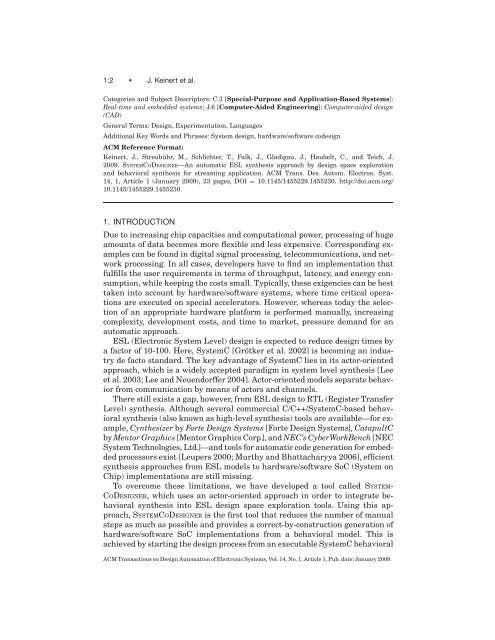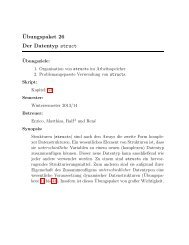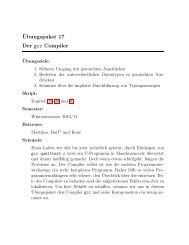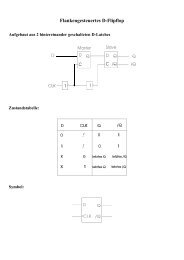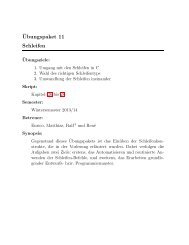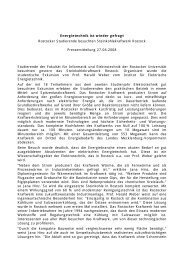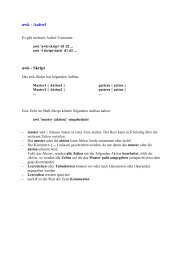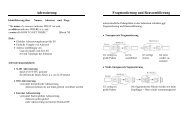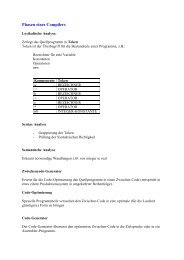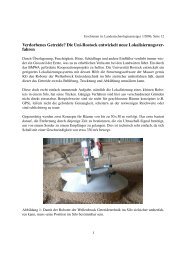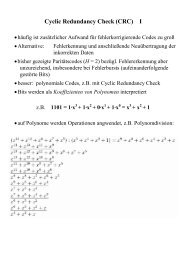An Automatic ESL Synthesis Approach by Design Space
An Automatic ESL Synthesis Approach by Design Space
An Automatic ESL Synthesis Approach by Design Space
Create successful ePaper yourself
Turn your PDF publications into a flip-book with our unique Google optimized e-Paper software.
1:2 • J. Keinert et al.<br />
Categories and Subject Descriptors: C.3 [Special-Purpose and Application-Based Systems]:<br />
Real-time and embedded systems; J.6 [Computer-Aided Engineering]: Computer-aided design<br />
(CAD)<br />
General Terms: <strong>Design</strong>, Experimentation, Languages<br />
Additional Key Words and Phrases: System design, hardware/software codesign<br />
ACM Reference Format:<br />
Keinert, J., Streubühr, M., Schlichter, T., Falk, J., Gladigau, J., Haubelt, C., and Teich, J.<br />
2009. SYSTEMCODESIGNER—<strong>An</strong> automatic <strong>ESL</strong> synthesis approach <strong>by</strong> design space exploration<br />
and behavioral synthesis for streaming application. ACM Trans. Des. Autom. Electron. Syst.<br />
14, 1, Article 1 (January 2009), 23 pages, DOI = 10.1145/1455229.1455230. http://doi.acm.org/<br />
10.1145/1455229.1455230.<br />
1. INTRODUCTION<br />
Due to increasing chip capacities and computational power, processing of huge<br />
amounts of data becomes more flexible and less expensive. Corresponding examples<br />
can be found in digital signal processing, telecommunications, and network<br />
processing. In all cases, developers have to find an implementation that<br />
fulfills the user requirements in terms of throughput, latency, and energy consumption,<br />
while keeping the costs small. Typically, these exigencies can be best<br />
taken into account <strong>by</strong> hardware/software systems, where time critical operations<br />
are executed on special accelerators. However, whereas today the selection<br />
of an appropriate hardware platform is performed manually, increasing<br />
complexity, development costs, and time to market, pressure demand for an<br />
automatic approach.<br />
<strong>ESL</strong> (Electronic System Level) design is expected to reduce design times <strong>by</strong><br />
a factor of 10-100. Here, SystemC [Grötker et al. 2002] is becoming an industry<br />
de facto standard. The key advantage of SystemC lies in its actor-oriented<br />
approach, which is a widely accepted paradigm in system level synthesis [Lee<br />
et al. 2003; Lee and Neuendorffer 2004]. Actor-oriented models separate behavior<br />
from communication <strong>by</strong> means of actors and channels.<br />
There still exists a gap, however, from <strong>ESL</strong> design to RTL (Register Transfer<br />
Level) synthesis. Although several commercial C/C++/SystemC-based behavioral<br />
synthesis (also known as high-level synthesis) tools are available—for example,<br />
Cynthesizer <strong>by</strong> Forte <strong>Design</strong> Systems [Forte <strong>Design</strong> Systems], CatapultC<br />
<strong>by</strong> Mentor Graphics [Mentor Graphics Corp.], and NEC’s CyberWorkBench [NEC<br />
System Technologies, Ltd.]—and tools for automatic code generation for embedded<br />
processors exist [Leupers 2000; Murthy and Bhattacharyya 2006], efficient<br />
synthesis approaches from <strong>ESL</strong> models to hardware/software SoC (System on<br />
Chip) implementations are still missing.<br />
To overcome these limitations, we have developed a tool called SYSTEM-<br />
CODESIGNER, which uses an actor-oriented approach in order to integrate behavioral<br />
synthesis into <strong>ESL</strong> design space exploration tools. Using this approach,<br />
SYSTEMCODESIGNER is the first tool that reduces the number of manual<br />
steps as much as possible and provides a correct-<strong>by</strong>-construction generation of<br />
hardware/software SoC implementations from a behavioral model. This is<br />
achieved <strong>by</strong> starting the design process from an executable SystemC behavioral<br />
ACM Transactions on <strong>Design</strong> Automation of Electronic Systems, Vol. 14, No. 1, Article 1, Pub. date: January 2009.


